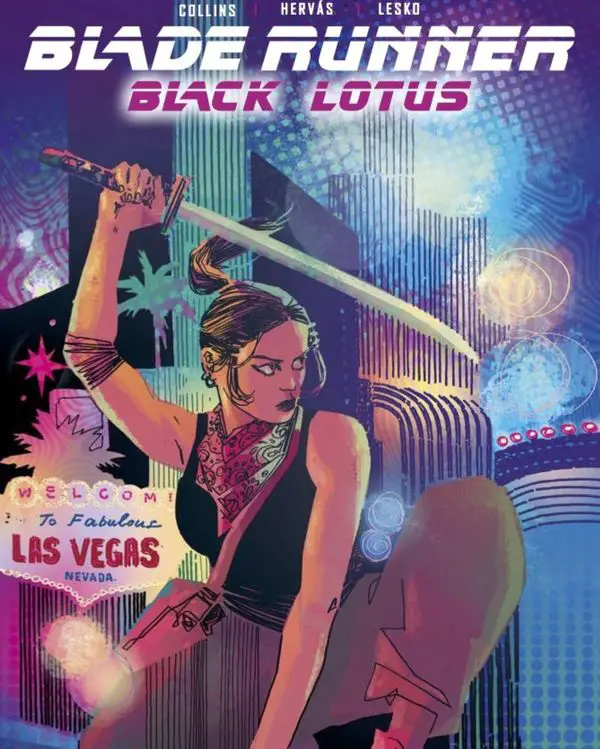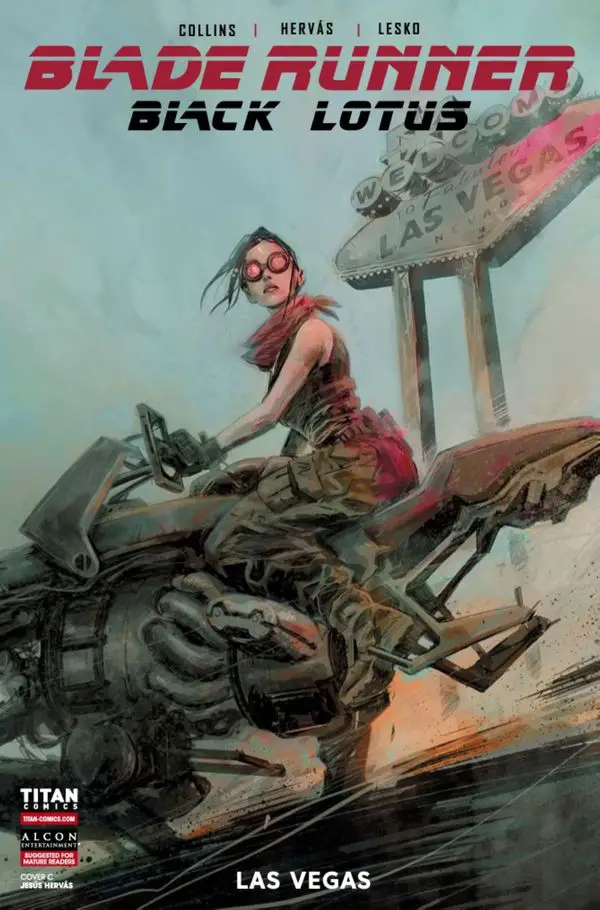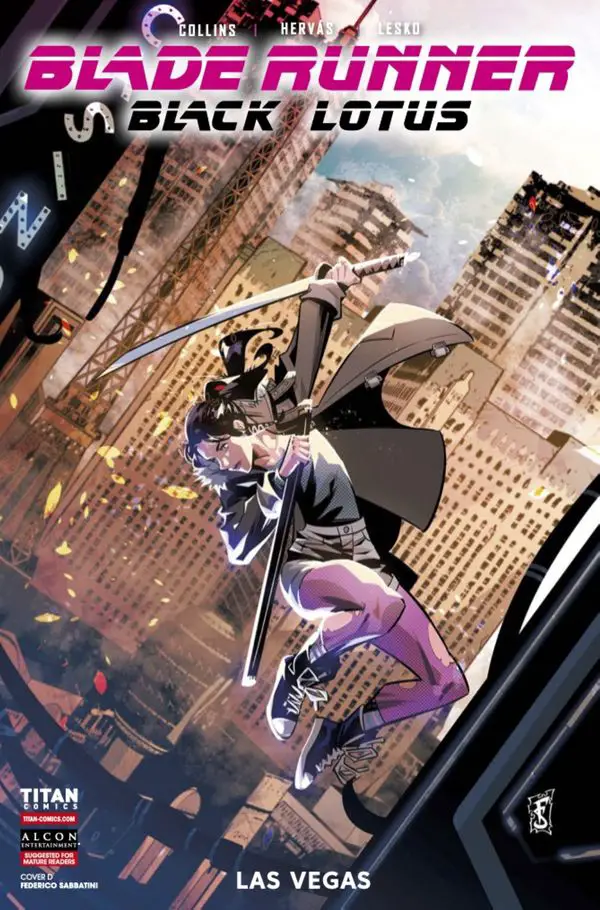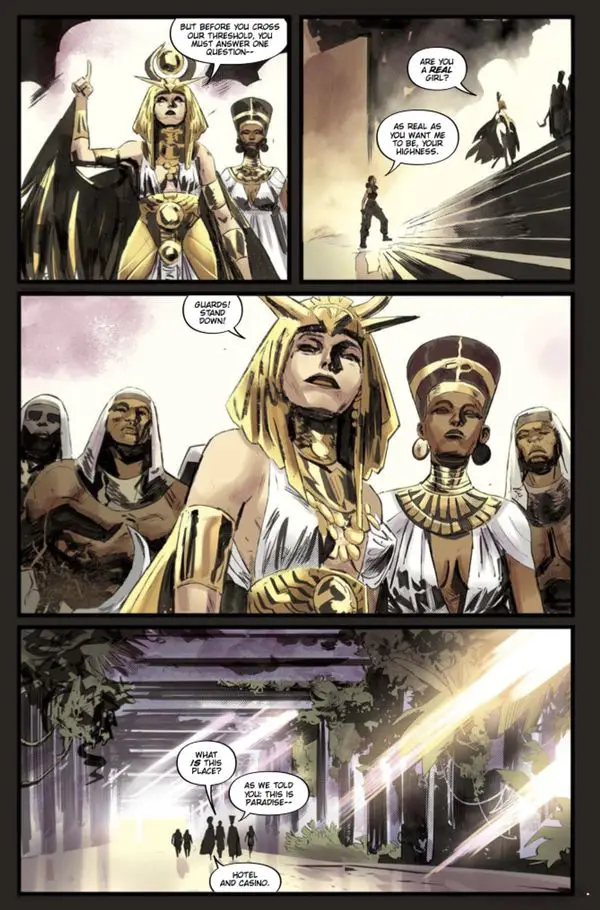Blade Runner Black Lotus: Las Vegas #2, by Titan Comics on 10/15/25, finds Elle wandering through the irradiated wreckage of Las Vegas, unsure if she’s stumbled into a sanctuary or another trap.
Credits:
- Writer: Nancy A. Collins
- Artist: Jesus Hervas
- Colorist: Marco Lesko
- Letterer: Jim Campbell
- Cover Artist: Dani (cover A)
- Publisher: Titan Comics
- Release Date: October 15, 2025
- Comic Rating: Teen
- Cover Price: $4.99
- Page Count: 34
- Format: Single Issue
Covers:
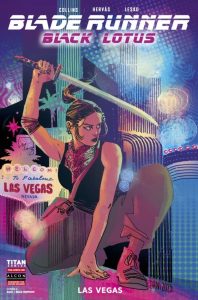
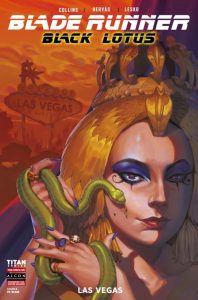
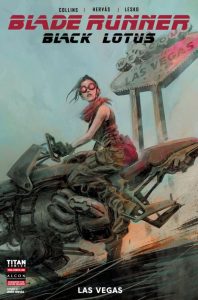
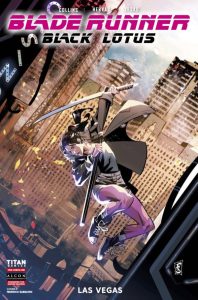
Analysis of BLADE RUNNER BLACK LOTUS: LAS VEGAS #2:
First Impressions:
This issue is a sandstorm of spectacle and storytelling. The visuals pulse with energy, each panel rippling with atmosphere and grim beauty. Still, for all that style, the script sometimes chokes on its own words, drowning tension in monologues when silence would’ve screamed louder.
Recap:
In issue #1, Niander Wallace Jr. gathered his so-called Doll Squad to capture Elle: a rogue replicant created in secret as his ultimate weapon. Meanwhile, Elle’s flight through the desert brought her to the irradiated city of Las Vegas, following ghosts of memory and violence. As she arrived, a mysterious figure dressed like Cleopatra greeted her at a casino’s steps, promising entry to “Paradise”—but only if Elle could prove she was “real.”
Plot Analysis:
The story opens inside the decayed sprawl of Las Vegas, where Elle meets the self-proclaimed “Queens of Egypt” (Cleopatra and Nefertiti) replicants who survived the nuclear blast that leveled the city. Their sanctuary, the Paradise Hotel and Casino, runs on solar power and filtered water, a flickering oasis for replicants cut loose from human masters. Through a sweeping retelling, Cleopatra details how she and her queenly allies wrested the city from other factions (Babylon, Rome, and beyond), turning the ruins into “Pax Vegas,” a realm where machines live as gods in the desert.
The illusion shatters when Elle’s authenticity is questioned. The self-proclaimed emperors – Julius, Caligula, and Nero – suspect she’s human because her replicant serial code is missing. Dragged toward execution, Elle reveals her true origin: a next-generation replicant created by Niander Wallace himself, built for assassination and survival, not servitude. Her confession ripples through the court like a tremor, unsettling their fragile peace.
Parallel to Elle’s journey, Niander’s Doll Squad (Davis, Marlowe, and Kozlov) trek toward Vegas under the command of Menzes and his aide, Tatsuo. Cracks form in their ranks as loyalties fray. Marlowe’s thirst for revenge against Elle clashes with Kozlov’s survival instinct. The tension snaps when an ambush erupts between rival mercenary factions, drowning their mission in gunfire and moral decay.
As the dust settles, the Doll Squad is bloodied and broken, while the survivors find themselves seized by Caesar’s soldiers.
Story
Nancy A. Collins weaves a mythic narrative from the bones of post-nuclear Vegas, punctuated with dialogue that alternates between haunting poetry and heavy exposition. The pacing is smooth, cinematic even, but every so often characters feel more like vessels for lore than voices with emotion. The mythologizing of Vegas as a new Olympus is fascinating, yet the constant history lectures bog down the immediacy of Elle’s peril. It reads less like a hunt and more like a history lecture beneath a flickering sign.
Art
Jesus Hervas’s art explodes with decay and detail. The mix of rust, dust, and neon pops beautifully under Marco Lesko’s saturated palette. Vegas looks sick but glorious. Its ruins hum with lost decadence, giving texture to every reflective surface. Each panel feels alive with grit, movement, and desperation. The fluid paneling ensures the pacing never drags, even when the dialogue threatens to.
Characters
Elle continues to command sympathy as part lost soul, part weapon, still unsure which is her true programming. Cleopatra is a mesmerizing new figure, radiant and ruthless, embodying a queen’s grace and a tyrant’s ego. The Doll Squad, by contrast, teeters on the edge of caricature, each with clear motivations, yet flattened by the comic’s rush to juggle too many perspectives at once.
Positives
The pacing is tight, the action fluid, and the art utterly magnetic. Hervas and Lesko have turned radioactive ruin into a surreal paradise, with just the right blend of grime and grandeur. The fight sequences pulse with kinetic oomph, and the lore, while heavy, adds an epic scale rare in cyberpunk comics.
Negatives
Too much is said and too little is left to breathe. The constant exposition about Vegas’s micro-empires and replicant dynasties slows the narrative momentum. The dialogue, especially from Cleopatra’s court, often reads like an oral history text dressed in sequins. A little more restraint, and the story’s tension would’ve burned hotter.
Art Samples:
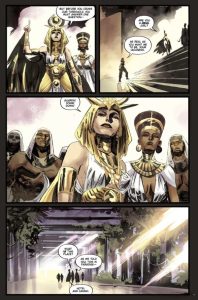
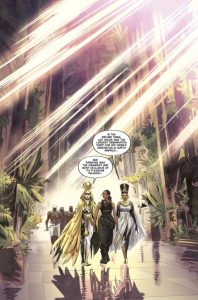
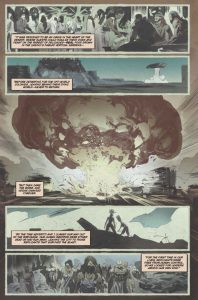
Final Thoughts:
(Click this link 👇 to order this comic)
BLADE RUNNER BLACK LOTUS: LAS VEGAS #2 is a neon fever dream that nails momentum and spectacle but occasionally forgets that mystery is sexier than explanation. The art burns with radioactive brilliance, the world-building teeters between myth and madness, and Elle’s descent into Vegas promises carnage and revelation in equal measure.
We hope you found this article interesting. Come back for more reviews, previews, and opinions on comics, and don’t forget to follow us on social media:
If you’re interested in this creator’s works, remember to let your Local Comic Shop know to find more of their work for you. They would appreciate the call, and so would we.
Click here to find your Local Comic Shop: www.ComicShopLocator.com
As an Amazon Associate, we earn revenue from qualifying purchases to help fund this site. Links to Blu-Rays, DVDs, Books, Movies, and more contained in this article are affiliate links. Please consider purchasing if you find something interesting, and thank you for your support.

